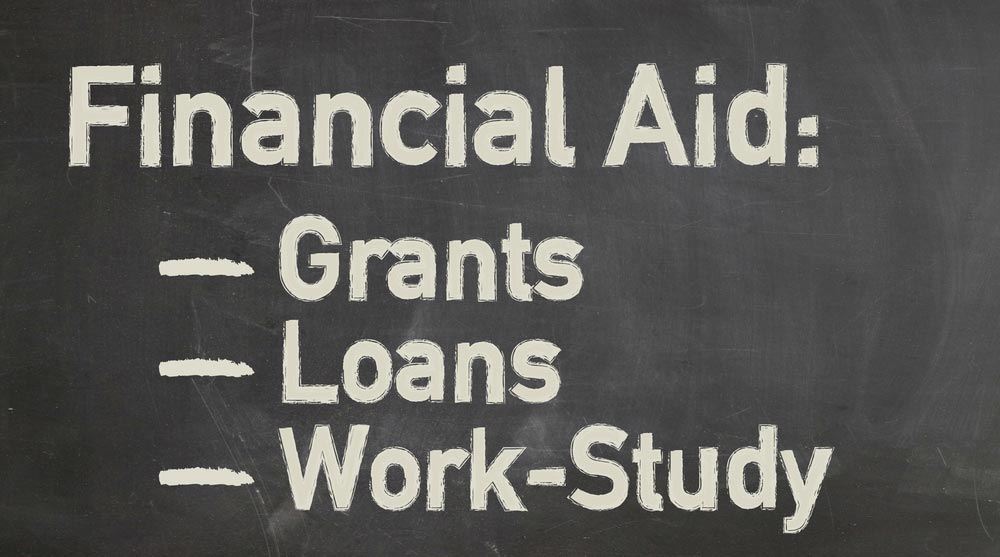
Stephen_Payne / Shutterstock.com
Note: This post was submitted to Student Caffé by Brianna McGurran. Brianna is a freelance writer and teacher based in Brooklyn, New York. Previously, she was a writer and spokesperson at the personal finance website NerdWallet, where she wrote "Ask Brianna," a financial advice column syndicated by the Associated Press, and appeared as an expert guest on ABC World News Tonight and the Today Show. We would like to thank her for her submission and credit her as the author of this blog post.
Getting into college after the relentless admissions process can be exciting. Receiving a generous financial aid package and knowing you won’t have to go into piles of debt to graduate can be even more exciting.
But what if you’re set on one college in particular, and it didn’t give you as much money as you’d hoped for? You’re not without options. Here’s how to get more help paying for school while keeping your future debt load in mind.
Ask for a reevaluation of your offer.
If your family’s financial situation changed since you first applied for aid, contact the financial aid office and ask it to reevaluate your offer.
The Free Application for Federal Student Aid, known as the FAFSA, calculates a family’s expected contribution to college costs using tax information from two years prior. That means that for the 2019–20 school year, colleges are looking at income information from 2017—and a lot might have changed since then.
If a parent or guardian lost their job, got divorced, paid for major medical expenses, or otherwise experienced financial hardship, let the financial aid office know. Check your school’s website for how to apply for a “Special Circumstances” reevaluation or appeal, and follow those guidelines. Be prepared to show documents verifying the event. The school may decide to update your aid eligibility, and potentially change your offer.
Apply for private scholarships.
Applying for scholarships is still a worthwhile use of your time, even after you’ve gotten into school. They can help close a gap in your financial aid package without the burden of interest rates or the need for repayment later on. Your school may have scholarships available that require a separate application, so check its financial aid website and pay close attention to deadlines.
You can also ask your parents’ workplaces if they provide scholarships for employees’ children. The same goes if you or your parents are members of a church or other community organization. Check out scholarships from professional associations related to your future career. Search for funding using the U.S. Department of Labor’s Scholarship Finder, or similar tools from College Board, Fastweb and Scholarships.com.
Set up a payment plan.
Some colleges give students the option to cover college costs using an installment plan, meaning you’ll pay any outstanding balance monthly over a semester or a school year. You’ll pay the cost out of pocket, but the college usually charges a small enrollment fee instead of interest, as a lender would. There are generally no credit requirements or restrictions on who can participate.
Ask your school about the payment plans available, and discuss with your family whether paying in installments could mean avoiding loans altogether. Compare financial aid offers from multiple schools so that you can identify institutions that will let you graduate with the least amount of debt.
Borrow the maximum in federal student loans.
If you must borrow student loans to afford college, borrow the maximum amount of federal loans you qualify for before turning to private loans.
Most federal student loans don’t require a credit check, and they generally have lower interest rates than private loans. Importantly, they’re more flexible in repayment, carrying the option to switch to one of a variety of plans that cap your monthly payments at an affordable percentage of your disposable income.
With federal loans, you can also access federal student loan forgiveness programs. For example, Public Service Loan Forgiveness offers to wipe away your remaining loan balance after 10 years if you work for the government or an eligible nonprofit and meet other requirements.
While federal loans for students are a smart option, use caution when considering borrowing Parent PLUS Loans. While a parent can borrow up to the student’s cost of attendance using a PLUS Loan, interest rates are higher than those on federal Direct Loans made to students. Undergrads in 2018–19 paid 5.05% in interest for Direct Loans, while PLUS Loan borrowers paid 7.6%. PLUS Loans also come with a higher loan fee, which gets deducted from the loan that’s disbursed to you: 4.248% in 2018–19, as opposed to 1.062% for Direct Loans.
Shop for private student loans.
If you still need more money for college beyond the maximum the federal government will lend you, private student loans are an option. Banks, credit unions, and online lenders offer college loans, generally with the choice of a variable or a fixed interest rate. A variable interest rate will change over time, and comes with the risk that it will increase.
Private loans don’t offer the same repayment and forgiveness options that federal loans do. They also require a credit check, which means most undergrads will need a cosigner to qualify.
Most importantly, use a student loan calculator to see what your monthly payment will be when you graduate. That way, you’re not shocked when your first bill comes due, and you can make a more thoughtful decision about whether your dream school is worth your investment.
-
Money Management Apps to Help You Stay on Top of Your Finances
-
Scholarships for Students from Illinois
-
Scholarships for African Americans and Students of African Heritage
-
Simple Ways to Build Your Savings Account
-
How to Become an Ex-Cosigner on a Student Loan
-
Scholarships for Students from Florida
-
Scholarships for Students from Kentucky
-
Happy Mother’s Day: Scholarships for Moms
-
Scholarships for Students from North Carolina
-
12 Weird Scholarships You Just Might Qualify for in 2019

